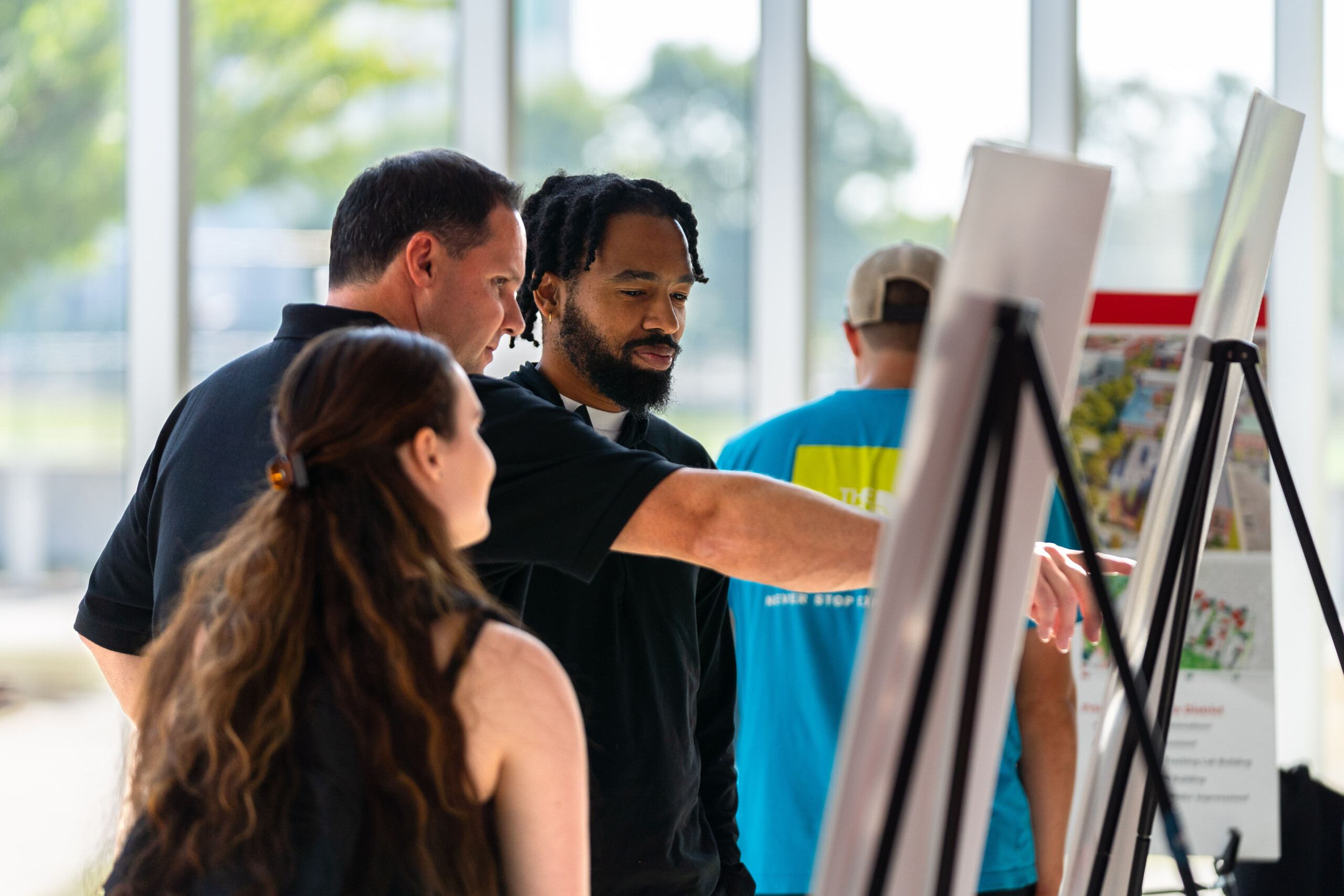This site uses cookies – More Information.
Earl Purdue, AIA, Retires After 36 years
“Find your purpose and pursue it with relentless passion.”
Those are the first words of advice Principal Earl Purdue says he would leave for his colleagues in design. It’s advice that has helped guide him for more than 35 years at Ayers Saint Gross. As he retires this spring, he’s grateful he can look back on a career in which he has felt a strong sense of purpose and meaning.
Earl had a winding road to the architecture profession. He worked as a paramedic for five years before going to school at the University of Maryland to earn his BS in Architecture, then completed his MArch degree from Harvard University Graduate School of Design, graduating with honors. Earl then joined Ayers Saint Gross in November 1988, when the firm was comprised of less than twenty people and did not yet have a focus on higher education work. In his early career, Earl worked on performing arts buildings, admissions buildings, STEM classrooms and laboratories, and – his favorite – academic health science projects.
“My heart really gravitated to the health science projects – anything related to nursing, medicine, medical lab sciences, and all interrelated health sciences that have a common denominator of helping people in a focused and noble way,” Earl said. “We provide spaces in the buildings that create vitality, interest, and excitement and inspire students to pursue careers in health care. Architecture plays a small part, but when it is married with incredible faculty and staff, it can help set students on a career path for the rest of their life.”
Earl has spent most of his career supporting those in the health care profession by programming, planning, and designing cutting-edge academic environments in which current and future care practitioners can learn and hone their skills effectively. Earl’s passion for this work led to success in earning the respect and admiration of clients from nursing and health science programs around the country. His work has consistently led to higher rankings and improved student outcomes for many programs, some of which include: the University of Alaska Anchorage, Auburn University, Barnes Jewish, The Catholic University of America, Duke University, Emory University, Frostburg State University, Hofstra University, Johns Hopkins University, Purdue University, University of North Carolina at Chapel Hill, University of Pikeville, University of Pittsburgh, University of West Georgia, and University of Tennessee Knoxville.
Earl approaches each project for its own unique merits, researching the clients’ mission and needs and developing a central thesis around which all design decisions are made. He said he finds nothing more enjoyable than working with aspiring doctors and nurses, hearing about their work, and using design as a tool to help to improve their experiences both inside and outside of the formal learning and practice environment.
“If you’ve ever been in a hospital, you understand all the stresses these nurses are dealing with, but their work is primarily unselfish,” Earl said. “They are very appreciative of everything you do for them.”
Earl is also an innovator, seeking to take lessons learned from each project and nuggets of new information to evolve design thinking and push the envelope on unique ways to solve design challenges. Earl’s ability to convey complex information through beautiful hand drawings, diagrams and sketches is a truly remarkable talent that inspired both his colleagues and clients and contributed to the success of many projects.
Outside of his projects, Earl has served as a valued mentor for many within the firm. He has been a champion for the firm’s Lex Schwartz awards, which honor emerging leaders. When he speaks with younger architects who have not yet found their unique niche or passion, he always advises them to learn as much as they can.
“No matter what project you are working on, extract the most out of it that you can from talking to clients, consultants and colleagues” he said. You never know when that seemingly useless nugget of information may someday be valuable.”
He also advises colleagues to take on new projects and challenges whenever they can.
“You’ve got to have fun and you’ve got to get outside of your comfort zone a lot,” he said. “If you’re never outside of your comfort zone, you’re never going to experience the satisfaction on the other side.”
Looking ahead to his retirement, Earl hopes to continue his work in health sciences education by volunteering as a standardized patient – playing the role of a patient so students can practice patient care on a real person.
Part of Earl’s optimism for the future comes from the confidence he has in the firm’s next generation of health science leaders.
“We’re so fortunate to have a deep bench of creative and inspired architects who are dedicated to creating innovative solutions,” he said. “Ayers Saint Gross will keep growing and our architects are going to remain dedicated to supporting our future health care workforce. I’m retiring, but I know this work will be in good hands.”
Learn more about our work in Nursing and Health Sciences.


